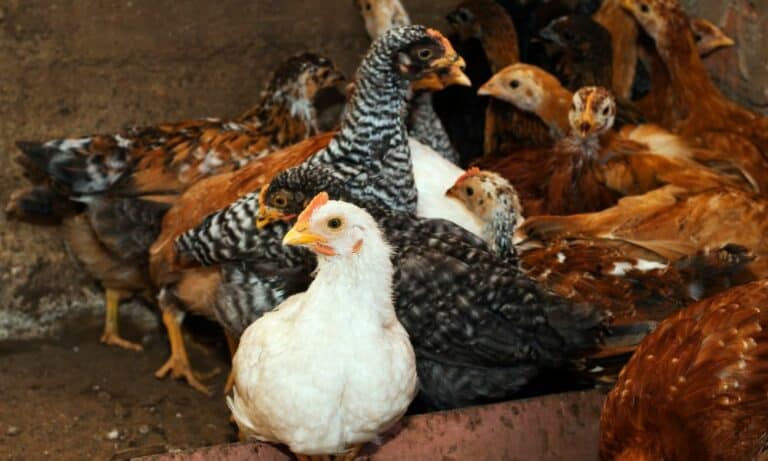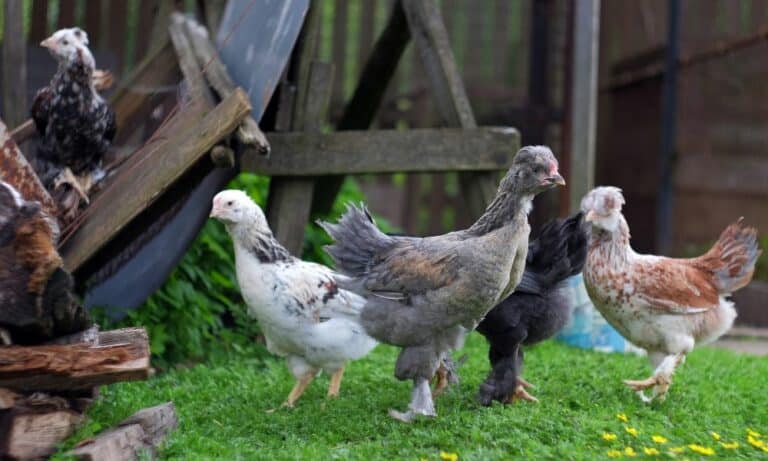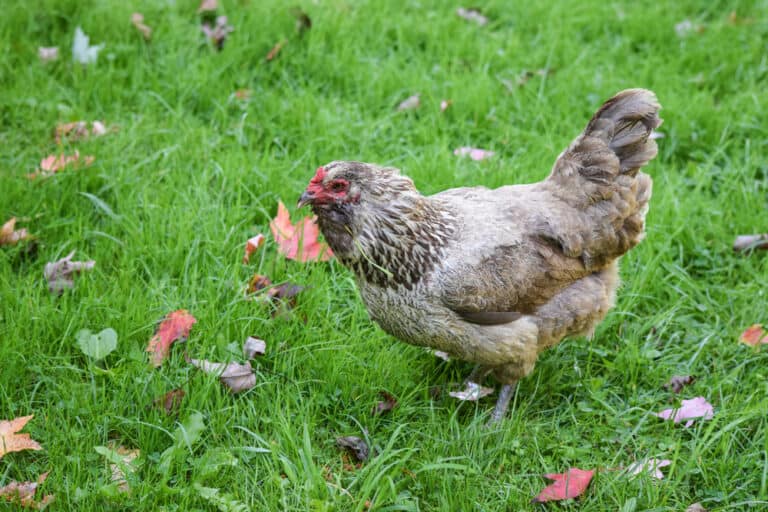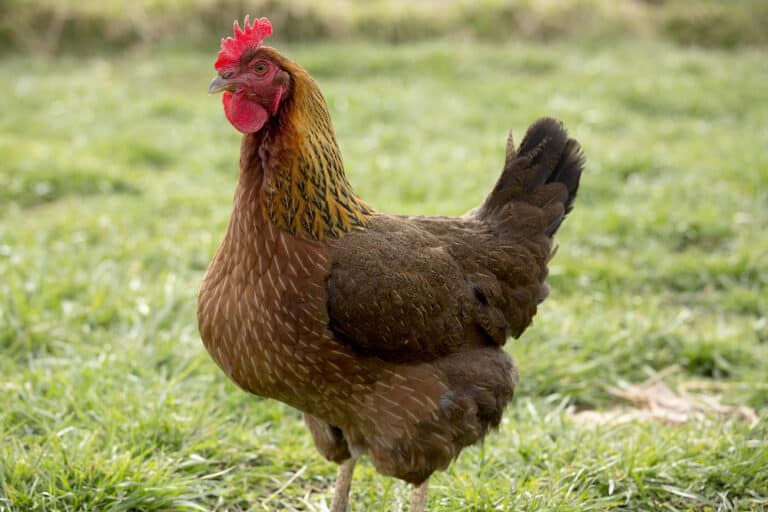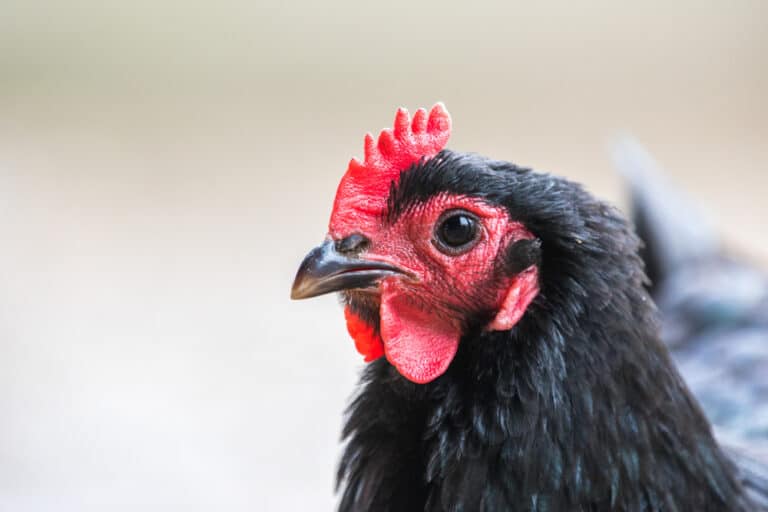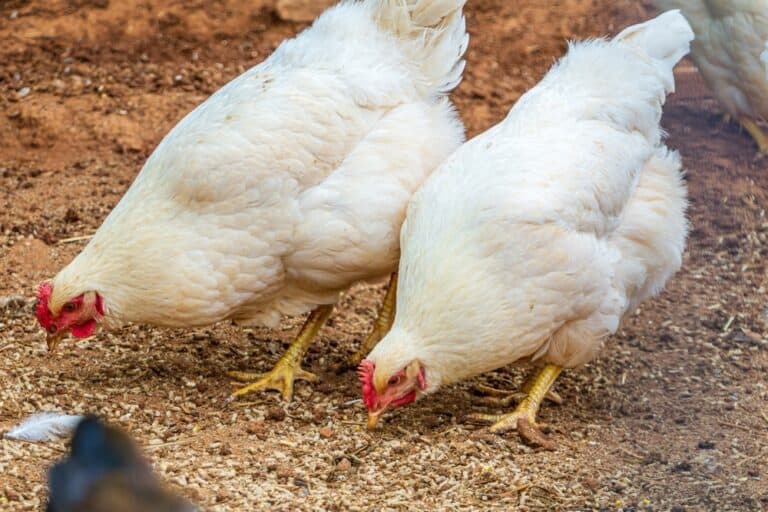Depending on what you’re looking for in a poultry bird, Buckeye chickens can either be the perfect bird for you or they’d be just a little bit off. Even in the latter case, however, no one can deny the fantastic and unique features of this large, strong, healthy, friendly, and beautiful American-class bird.
So, what is the Buckeye chicken breed exactly and what do you need to know about it? We’ll cover all the important details below, from the breed’s inception and history to its egg-laying capabilities, temperament, hardiness, and more.
What are Buckeye chickens?
Buckeye chickens are large poultry birds with dark brownish-red plumage. They bear the “buckeye” name not because of something specific in their eyes but because of their unique color and the nickname of their birth state in the US – Ohio.
History of the Buckeye chicken breed
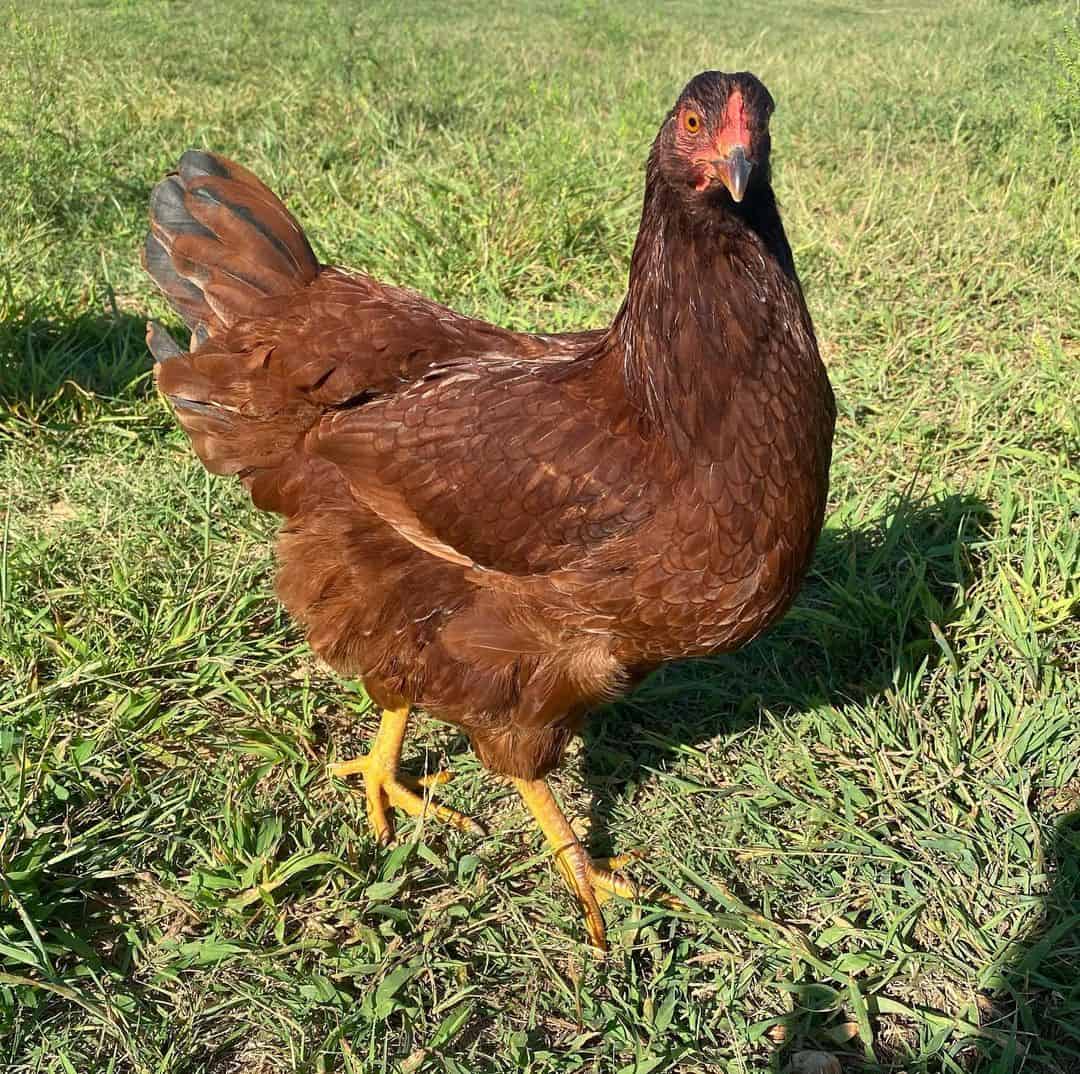
Buckeye chickens are native to the Buckeye state, as is Ohio’s nickname in the United States. They can be considered a relatively new breed as they were developed at the end of the 19th century by Nettie Metcalf in Warren, Ohio. The enterprising breeder first started her cross-breeding efforts by mating male Buff Cochins with Barred Plymouth Rock females.
She later described the resulting flock as “large but lazy fowl” which was a problem as such birds are prime targets for predators such as haws, eagles, and foxes. So, she started looking for new mating partners for her half-Cochin/half-Plymouth Rock birds. Eventually, she found a black-breasted red game male a year later.
Mrs. Metcalf later shared that other breeders mocked her for her intention to cross Cochin/Plymouth Rock fowl with game chickens as most game chickens were seen as unsuitable for developing purebred domesticated chicken breeds. The fact that Metcalf was the first – and only, to this day – female chicken breeder to originate her own breed likely also motivated some of that mockery.
All that laughter ended when it turned out that Metcalf’s efforts resulted in success, however. The cross between the black-breasted red game rooster and Metcalf’s chickens was a large red offspring with a gorgeous color, a powerful build, a friendly nature toward humans, as well as high energy levels. In essence, Metcalf managed to fix all the issues of the previous crosses and then some!
What’s more, these new chickens were the only breed with such a rich red color in the American Midwest as the famous Rhode Island Red chicken breed hadn’t made its way that far west yet. So, even though the original Rhode Island Red was still the “first” red chicken in the US, Metcalf’s chickens were first in Ohio.
That being said, Mrs. Metcalf did start working with Rhode Island Reds too and she even produced some crossbreeds between them and her original red chickens. She tried advertising her new breed as the “Pea Combed Rhode Island Reds” because her own chickens had a pea comb which was unique not only to Rhode Island Reds but to all American chicken breeds in general.
Even though the pea comb is a highly-desirable feature in chickens, however – it means they are much more cold-resistant than other fowl – the use of the Rhode Island Red name meant that Nettie Metcalf’s birds didn’t stand out enough to commercial producers.
So, she eventually renamed her birds to Buckeye chickens – both after her state’s nickname and the reddish-brown color of the Buckeye nut. She even went on to establish the American Buckeye Club and it wasn’t long until – in 1905, to be precise – the Buckeye chicken breed was admitted into the American Poultry Association’s Standard of Perfection.
All this doesn’t mean that the Buckeye chicken went on to have an easy time on the American poultry scene, however. Because of its slightly slower growth, this breed wasn’t preferred by most large-scale chicken meat producers. So, the Buckeye chicken was relegated to a lower status – a pet poultry bird or a chicken for small-scale fancier breeders.
This meant that the Buckeye almost went extinct in the mid-20th century as the mass-producing poultry industry went into full swing. Still, the breed was saved by quite a few enthusiastic breeders that recognized its qualities. Thanks to their efforts, the Buckeye chicken is not only still around today but is growing in popularity.
Buckeye chicken looks and standard
Buckeye roosters are impressively large birds – about 9 lbs by the breed’s standards but often even more. Buckeye hens are smaller, usually 6.5 lbs by standard, often up to 7 lbs. This puts Buckeyes well above the medium range for domesticated chickens and into the large bird category.
Both males and females boast impressive physiques with a broad back, powerful wings, and meaty thighs. To a professional, especially back in the early 20th century, the physique of a Buckeye would appear Cornish and it is, even though the Cornish breed wasn’t one of the chickens used in the inception of the Buckeye.
The color of a Buckeye’s feathers is one of the breed’s signature traits. At first glance, these chickens look very much like a variation of a Rhode Island Red because they have a similar color. Upon further inspection, however, we can notice that the underside of the feathers on a Buckeye chicken’s back change color and are actually lighter. This isn’t the case with the Rhode Island Red which is red through and through.
Another very key distinguishing factor of the Buckeye chicken is its bright red pea comb. This is a feature that neither Rhode Island Reds nor any other American poultry bird has.
It’s more than just a cosmetic feature either – the bright red pea comb means that the Buckeye chicken is better-suited for cold winter weather than most other poultry birds. This is fantastic for breeders in Ohio as well as in most other northern states.
The Buckeye chicken also has yellow legs and skins, and its wattles, earlobes, and face are bright red just like its pea comb. The yellow beak is shaded with a reddish horn and the eyes are a reddish-bay color too.
What do Buckeye chicks look like?
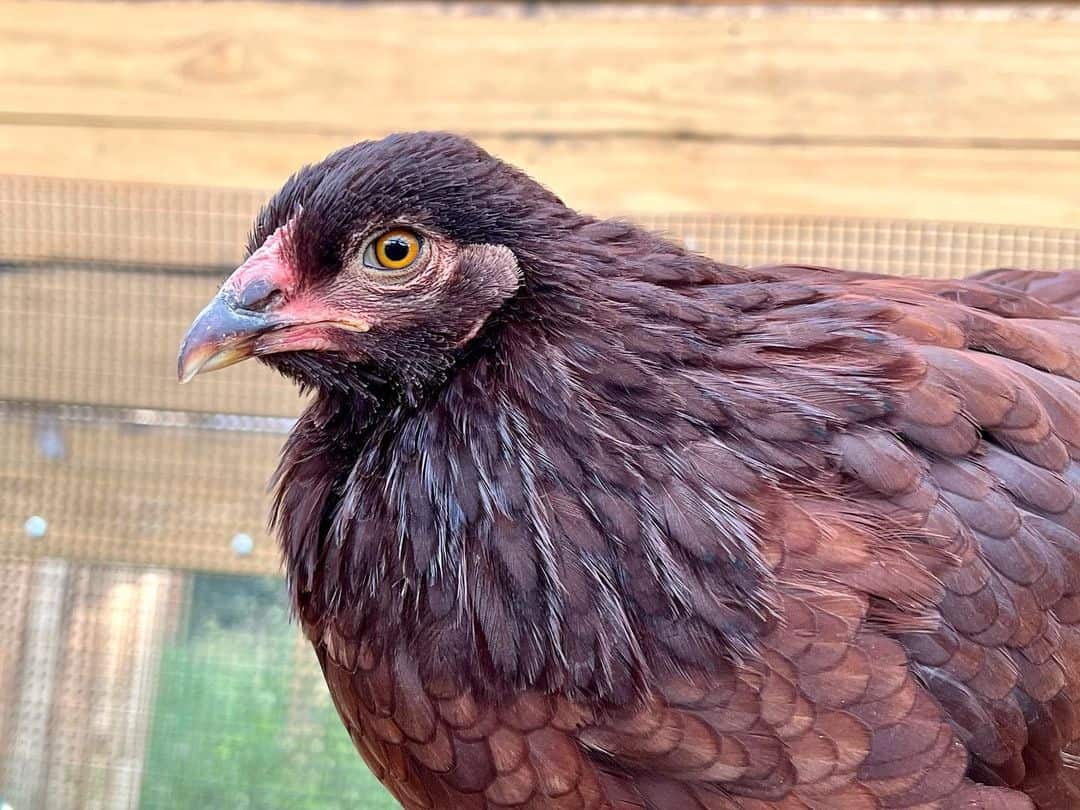
Now that we know what an adult Buckeye looks like, let’s examine their red offspring. Or, rather – their little yellow chicks that have just minor red hues across their backs. Buckeye chicks look almost exactly like any other chicken’s offspring in every aspect, except those red hues.
Even those aren’t entirely unique to this breed, so, it may be difficult to know that these chicks are Buckeyes unless you know which bird hatched them. As the Buckeye chicks start growing, however, they start looking more and more like their parents.
Even though these birds grow a bit slower than many other chickens – hence why they are not the first choice of the mass-producing poultry industry – they grow into a very substantial size and are can be ready to be “produced” around the 24th week or sooner. Many would say that the extra large size, the beefy wings, and the meaty legs and breast of the Buckeye compensate for the slightly slower growth.
Buckeye chicken health
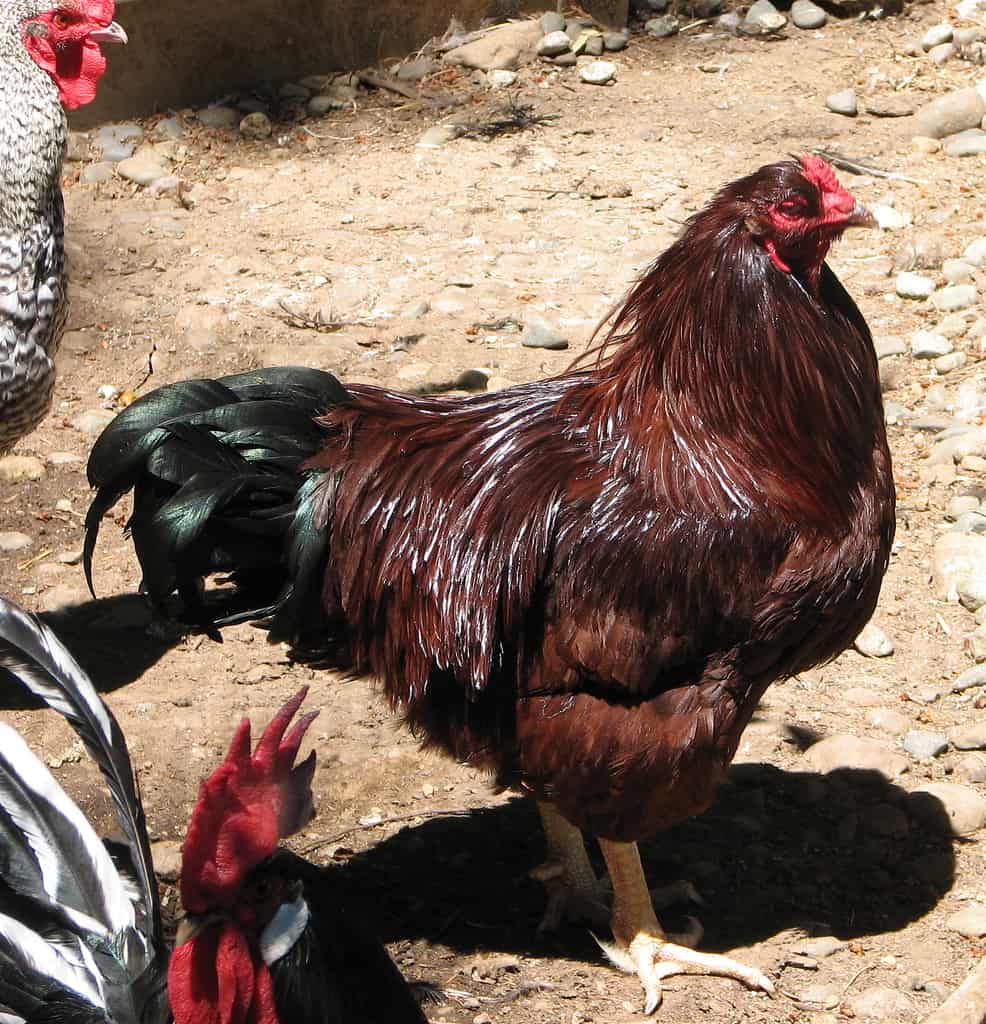
Another big benefit of the Buckeye chicken breed is just healthy and hardy it is. These chickens can tolerate both warm and cold weather, and their small pea combs are very unlikely to get frostbitten.
Buckeyes also love dust bathing themselves and, because they easily allow being handled, they can be easily inspected for parasites and health concerns. Aside from the usual parasite concerns that are important for all poultry birds, the Buckeye doesn’t have any breed-specific health risks that should be considered.
There is one important dietary note, however – because of their size and strength, Buckeyes require about 10% more protein in their diet. That’s why many Buckeye owners feed their birds with game bird chicken feed and/or give them high-protein treats such as mealworms. Some extra calcium can also be added to the diet of laying hens.
Lastly, to keep your Buckeyes healthy, you also want to give them extra space – a minimum of 10 square feet of chicken run space per bird in your flock.
Buckey egg laying, temperament, and other details
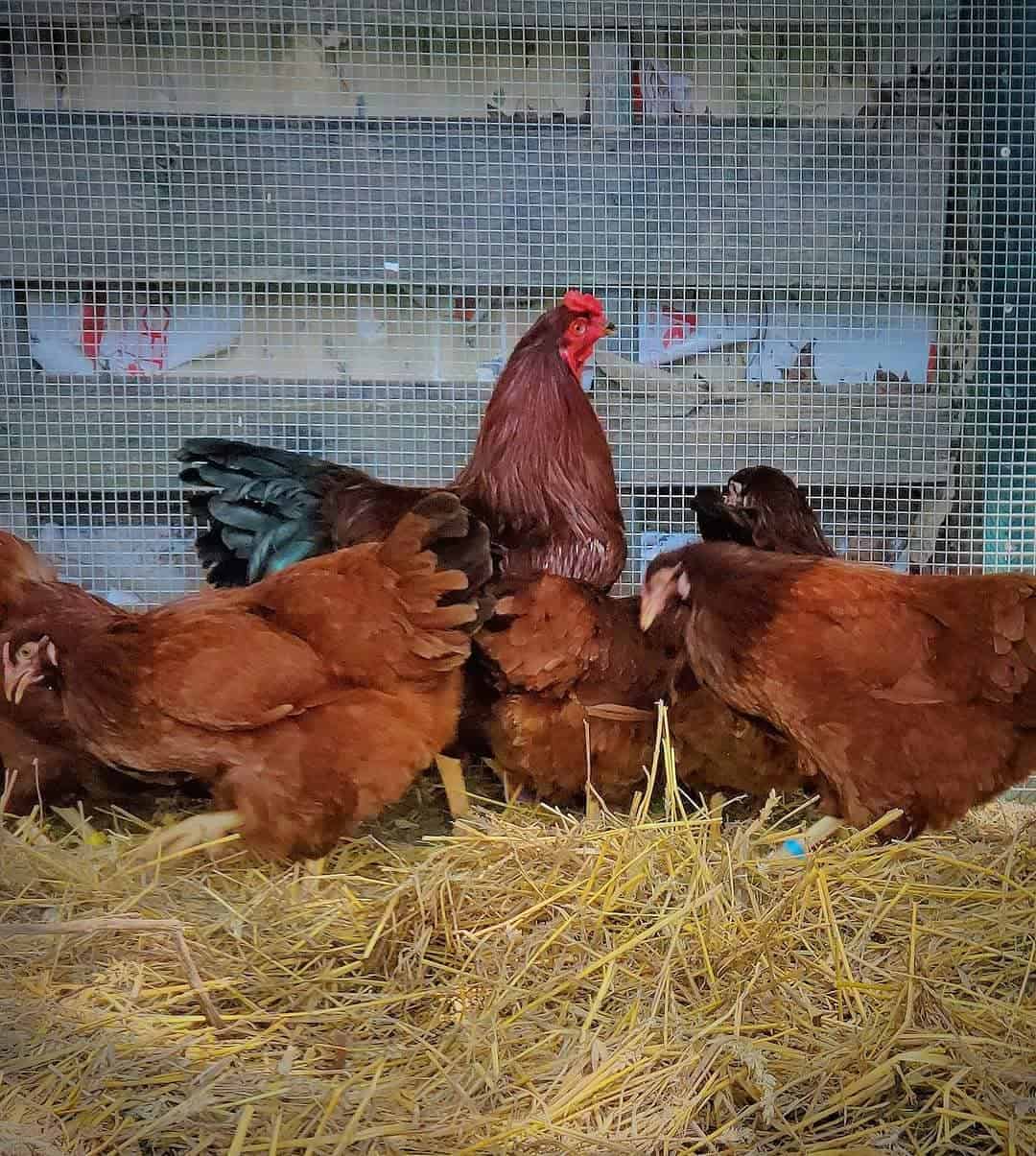
So, Buckeyes are large, meaty, and beautiful. What else do we need to know about them, however?
For starters, Buckeye hens are amazing egg layers. They produce large brown eggs that are very highly valued and they can lay up to and over 200 of them a year – usually 3-4 per week but more with good care. And, because this is a cold-weather bird, Buckeyes keep laying eggs all throughout the winter months too.
So, while the slower poultry production means they are sometimes skipped as meat-producing chickens, their eggs are of premium quality. Overall, however, they are considered a dual-purpose breed as they can be kept both for eggs and for meat, especially if we’re just talking about a backyard flock and not for mass production.
Temperament-wise, Buckeye chickens are also an excellent breed. These birds are active and defensive enough to protect themselves against predators if need be but they are very social and well-mannered around people and other animals. In fact, this can be seen as a drawback in some cases as Buckeyes can be a bit too shy when living with other, more assertive birds. This is rarely a problem, however.
In short, the temperament of Buckeye chickens is ideal for family farms and backyard breeding, especially if you have kids, pets, and other animals as your Buckeyes are almost guaranteed to get along with all of them. This also makes them great exhibition birds as Buckeyes tolerate being moved and surrounded by people well.
The only occasional exception to that would be that a Buckeye rooster can sometimes be aggressive and territorial when it’s in its mating season but even that is rare as most males are also well-mannered.
Another behavioral peculiarity of these birds is that they have strong foraging and even hunting instincts. Buckeye hens and roosters are well-known for chasing mice and other pests away with a lot of enthusiasm and they are often compared to cats in that regard.
Even more importantly, the foraging skills of these birds are great if you like letting your poultry free-range as it can literally cut back on your feeding bills by a substantial amount.
Next, it should be noted that Buckeye chickens are quite talkative and loud. This can sound like just a bit of trivia but it’s important as it makes the breed less suitable if your neighbors live nearby. That said, the full range of sounds Buckeyes make is quite diverse, up to and including a dinosaur-like roar. So, even though they are loud, at least you’ll always be entertained by the dinosaurs in your backyard.
Lastly, as these birds are both large and physically active, it’s important to remember that they are not well-suited for life in confined spaces, at least not for long periods of time. Their mild temperament does mean that they tolerate being placed in cages for some time, which is great for transportation, exhibitions, and so on, but a Buckeye chicken does needs lots of space if it is to stay healthy and happy.
This part works well with the Buckeye’s loudness as both factors require you to give your Buckeye flock lots of space to roam, away from your neighbors.
In conclusion – is the Buckeye breed right for you?
It’s rather clear from all of the above that the Buckeye chicken is ideal for homesteaders that like to free-range and care for their birds. These large and active chickens just aren’t suitable for life in a cage but they will thank you with hundreds of huge brown delicious eggs if you take good care of them.

